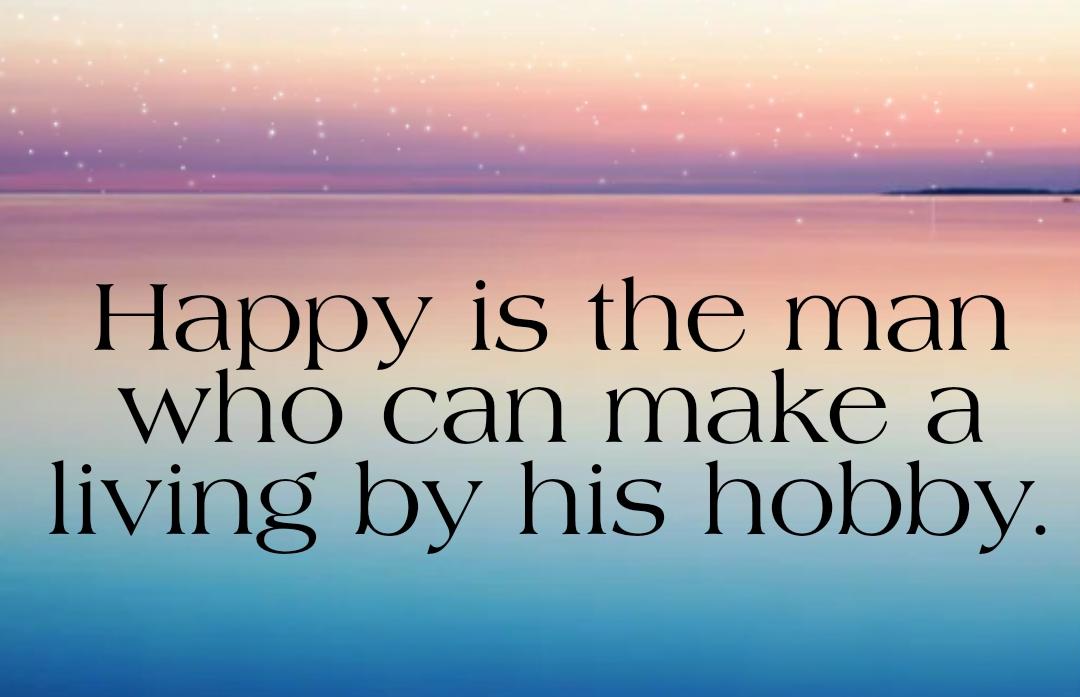Art is the expression or arrangement of conceptual ideas or technical skills through drawing, sounds, movements, and other elements. Art is classified into visual, graphic, plastic, the decorative arts, the performing arts, music, and architecture. Most artistic disciplines intend to affect and connect with the senses and emotions of human beings. However, this is not the sole purpose of art. Art expresses feelings. It entertains and, most importantly, art seeks to communicate.
Drawing is a popular form of art under the visual arts category. It represents a three-dimensional image with a length, width, and height, on a two dimensional surface such as paper using drawing instruments. The instruments used include graphite pencils, pen and ink, inked brushes, sanguine sticks, colored pencils, crayons, charcoal, chalk pastels, paints, and erasers.
The most commonly used surface for drawing is paper. However, drawing can be done on canvas, wood, plastic, or a blackboard and whiteboard temporarily. Each instrument and material, when used, gives unique results. In that case, the choice of a medium depends on the type of drawing that an artist intends to make.
Drawing is a skill that can be learned and mastered through constant practice. It can mean the act of marking a surface, or it can mean the product of the act of drawing. Drawing is the basis for visual arts like painting, architecture, and sculpture. These fields often use drawing as the initial medium for their final works. For instance, a drawing can be made in preparation for painting.
Categories of drawing
Figure drawing is representation of the human figure in any of its postures and shapes. Graphics can be made from photographs, imagination, or skeletal models. A picture made from the observation of a live model is called a life drawing. A figure may be made as an artwork of its own or made in preparation for painting, sculpture, or medical illustration.
Doodling is the act of sketching random figures while a person’s attention is diverted or occupied. Children often do it because they lack hand-eye coordination. Adults also do it out of boredom or jovially. Doodling is familiar with students when they lose interest in a lesson. What’s more, doodles can be produced during telephone conversations.
Cartooning is the illustration of semi-realistic images or cartoons that are often intended for satire, caricature, or humor. A person who draws cartoons is called a cartoonist or animator. Freehand drawing is done without instruments or straight edges. Artists, technical and skilled workers do it.
Benefits of drawing
Drawing is one hobby that has tremendous benefits for both children and adults. Drawing fosters creativity. It involves the use of imagination to create vivid representations of concepts and surroundings. Drawing plays a role in brain development. Thus, young children are encouraged to draw to aid in their brain development and prepare them for academic pursuit. For artistic or right-brained people, drawing helps to enhance the creative skills they already manifest. While for left-brained or analytical people, it helps them to develop creativity at their own pace.
Drawing can be an outlet through which feelings and emotions are expressed and understood. People with shyness and autism can surpass these weaknesses by drawing. We all go through periods of stress at different points in our lives, and engaging in drawing can help in relaxation and hence reduces the risk of illnesses.
Drawing creates a positive approach to life. When people make appealing pieces of art that are appreciated, they feel good about themselves and what they have accomplished. Appreciation encourages them to go further and develop their skills. Also, it boosts self-esteem and belief in one’s capability.
Drawing enhances mobility and fine motor skills. Fine motor skills include specialized movements of hands, fingers, and wrists. Therefore, dexterously holding a pen or brush while drawing helps to develop efficient hand movements.
Drawing related careers
Pursuing drawing as a professional career is a great way to showcase and make fair use of creativity and ability. Many professions incorporate this form of art with other sectors, like business and technology. Students with a degree in drawing can work in theatre, television, video industries or work as art directors, designers, and more.
A graphic designer creates original images of clothing, logos, signs, and websites. They do so by hand drawing or using Computer-Aided Design. An art teacher works at all levels of education from elementary school to college and university and teaches various art methods. They must be strong communicators who use different techniques to tailor learning methods that suit their students.
A tattoo artist draws images on people’s skin using a needle and electricity. He uses his artistic skills to design, shape, size, and color tattoos. Interior designers create beautiful indoor spaces for houses. They do this by hand sketching a layout to show to a client. They can also use Computer-Aided Design technology to do this.
An art director is responsible for mentoring and supervising the artwork of designers. They use strong drawing skills to illustrate a clothing brand, advertisements, themes, and magazine layouts.
An animator creates moving images for cartoons, animation movies, and video games. They are responsible for drawing every aspect from the characters to the foreground and background. They often hand draw but use computer software to create three-dimensional images for characters.
A fashion designer illustrates innovative styles for customers through hand drawings. However, they have to finish their designs using Computer-Aided Design technology. Industrial engineers develop the appearance of vehicles, electronics, and appliances. They combine art, business, and engineering to design profitable products that are user friendly and visually appealing.
To thrive in the highly competitive world of art and business, an artist must gain good job prospects. One needs to widen his or her experience in their field of study. Build a good reputation, make contacts and individual customers, especially for freelance workers. Those looking to be employed should consider the type of company to work for and the opportunities for career advancement. An artist should engage in areas where there is pressure to come up with new ideas and, most importantly, develop their portfolio.
Universities and Institutes that offer courses in drawing and related fields
Both beginners and skilled artists need to undergo training to learn and refine their expertise. Training can be done in academic institutions, and individuals who cannot access the schools physically can enroll in online classes. In contrast, others can learn through recommended books and instructional tutorial videos.
Drawing courses and programs vary depending on the academic institution. The curriculum also varies from one institution to the other. In that case, it is advisable to thoroughly research on schools before committing to ensure that a program fits one’s goals and schedule.
Below are some of the best universities and institutes offering courses in drawing and related fields. Falmouth university in the united kingdom provides a Bachelor of Arts in Drawing. The degree brings together the practical application, structured learning, and dedicated tutor support along with national and international placements.
Instituto Europeo di Design Rome offers a Bachelor in Illustration and Animation. It aims at shaping a professional who brings form to a concept or idea by transforming creativity into reality. OCAD University in Toronto, Canada, offers a Bachelor of Fine Arts in Painting and Drawing.
SAE Institute UAE in Dubai offers a Bachelor of Animation. It equips students with skills and knowledge in 3D modeling, rigging textures, character animation, lighting, project management, and cooperation. What’s more, students get to participate in the real world projects under the supervision of experts.
Recommended books
Books have been written to guide beginners and aspiring drawing artists. Not to mention, some have been published to help artistically good people to improve their skills and techniques. Drawing the Head and Hands by Andrew Loomis helps to understand the principles of making realistic portraits. Pocket Art: Pocket drawing is a book for those looking to improve portraiture skills.
Drawn To Life focuses on capturing the moment through drawing. Focuses more on emotion and action and less on technical accuracy. The Sketch Encyclopedia trains on how to draw sketches to form complete images. It breaks down projects into steps, thus making it easier to learn and follow.
Drawing on the Right Side of The Brain is for professional illustrators or hobbyists. The book encourages one to think creatively. If you are an art educator, you should grab this book to teach techniques, materials, and how to see differently.
How to draw comics the Marvel way is mostly for illustrators, animators, and comic book artists. The silver course, written by Stephen Silver, provides step by step tutorials and techniques besides offering inspiration and encouragement.
Art fundamentals by Gilles Beloeil teach about color, composition, perspective, anatomy, light, depth, and portraying emotions. Modern cartooning is a book written by Christopher Hart for beginners. It has step by step tutorials for drawing cartoons. He also has a YouTube channel that trains on the same.
In conclusion, drawing is a skill that can be learned and mastered. It is a fun hobby that has tremendous benefits and can lead to your dream job. What’s more, it is an excellent way for art lovers to showcase and put their talent into practice. Continual training, hard work, and dedication inescapably beget decent artwork. Also, good job prospects attract great opportunities and hence, a consummate drawing career.
By LINET SARICH











I am so proud of you Linet..
Keep shining your light to the world
Thank you😇
Impressive,
I like it
Thank you, Lucid
Wow amazing keep it up dear
I will thank you😊
This is great article,educational too. I love it. Keep up the good work
FM
Thanks😇 I will
Nice creative work Sarich
Thanks
Good work sarich
Thanks
This so brilliant.l love it.
Thankie
Wow this is awesome.. kudos
Thank you😊
I am an art person and your piece is appealing 💯 and i love it gal. keep it up Linet.
Thank you Sharon
good job sarijjjjj👏👏i loved it!
Thanks😊
Thanks
Perfect work Sarich I wish you all the best
Thank you
This is nice baby girl. Wishing you the best
Thank you Irine😊
Imagine, make, manifest👌👌👌
Totally💯
Good work Sarich
Thankie
Superb work💯 real impresive
Great work @ Sarich
Keep up
It’s a nice work Buddy..It’s impressive ..I love it👌..All the best my girl😊
Thank you😇
Definitely an interesting read and insightful as well😊
Thank you
Keep it up dear🥰
I will, thanks
It’s an amazing, enlightening, inspiring piece of intellectual property. I am quite impressed by your piece of work….keep it up and keep shining 😍
Thanks☺
Great writing baby girl!!
Thank you
Captivating
Thanks Jay
My bebe doing a great job apa…..its excellent
Thank you💯
hapo umeweza 😍Thats a good work am proud of you
Thank you😊
Wonderfull article
😇
Nice work.. Go go.
Thankie
Keep going Girl Sarich… Sky is the limit.
Thanks
Its such an amazing article…keep up!
Thanks
All the best deskmate.
Thank you
This article is so captivating and articulate. I have actually learnt a lot of new things and it has developed my interest in art. This is so Good! Sarich. Keep it up.
I’m glad it has… Thank you
Impressive. Good job Sarich
Thank you bbg
Comment:creative,run the world iron Lady
Thanks
Comment:refreshing piece
keep the fire burning
Thanks
Awesomel . Am happy for you 👏👏👏
Keep up the hard work Miss, it’s all it takes.
Congratulations.
Thanks Billy
Hey Sarich, good work. It’s very informative and well written. Good work
Thanks Liz
Creative work… interested
Well articulated and definitely a captivating read🔥
Great work sarich
I’m really greatful I’m proud of you keep doing the good thing you’re doing.
Rutto kamama kolem Mental health Advocate NACADA agent, Founder Tiaty Youth Development Association Community based organization Offices at Baringo County Tiaty Constituency Mondi Division loyamorok Nginyang East, helping out in matters affecting the youth and entire Community peer mentorship, mindset programs, life skills and Recreational Activities
Good piece there. Well done Linet.
Great work Linet
Brilliant work Linet
This is amazin
This is so brilliant babygirl🤭 Creativity yako ni next gen😊 I Love it😌💕
Its an amazing piece keep on doing great piece like this and we shall be buying your articles soon.
Wow! Wow!,,big up Linet,,its amazing
This is just so good linet..no it’s a masterpiece …well done ..
Nice piece of art girl👏… Keep going
Great piece and Talent Chepokarupet. Keep it up the sky is not a limit.
Congratulations
I’m Soo proud of you Sarich😊
Good work.keep it up
Nice stuff out here
My girl 😌❤️💃💃💃am proud of you
Good work Sarich keep the fire burning
Amazing 💯 sarich
Wow soooo good
Good work Sarich…keep the fire burning
Good work Linet
Awesome 💯💯
Nice work
Its an amazing essay keep inspiring. 👏👏👏
Congratulations…keep going.. great work
Awwwwwww sissy great work ❤
Beautiful work.. Keep it up
Amazing work.. Keep it up
Keep it up Sarich
Keep it up Sarich
This is Soo amazing sister..I wish you all the best keep it up😘
Baby sister this piece is so educational and amazing keep it up
Such a beautiful piece.Keep winning🥂
Good job sarich ,you will make it
I believe utaenda mbali congratulations babes
You are going far loves I’m proud of you
Good piece 👌
Good job sarich